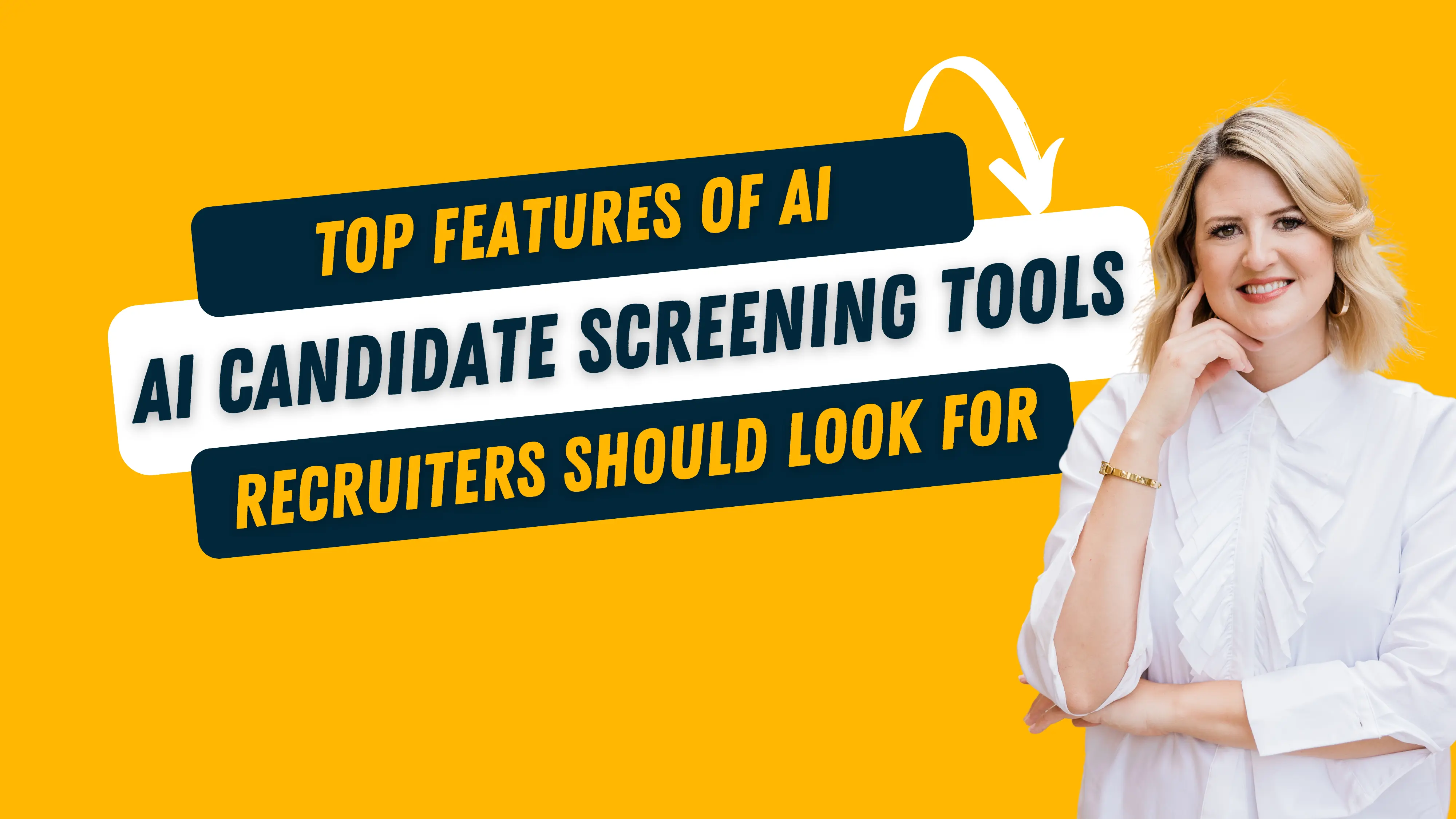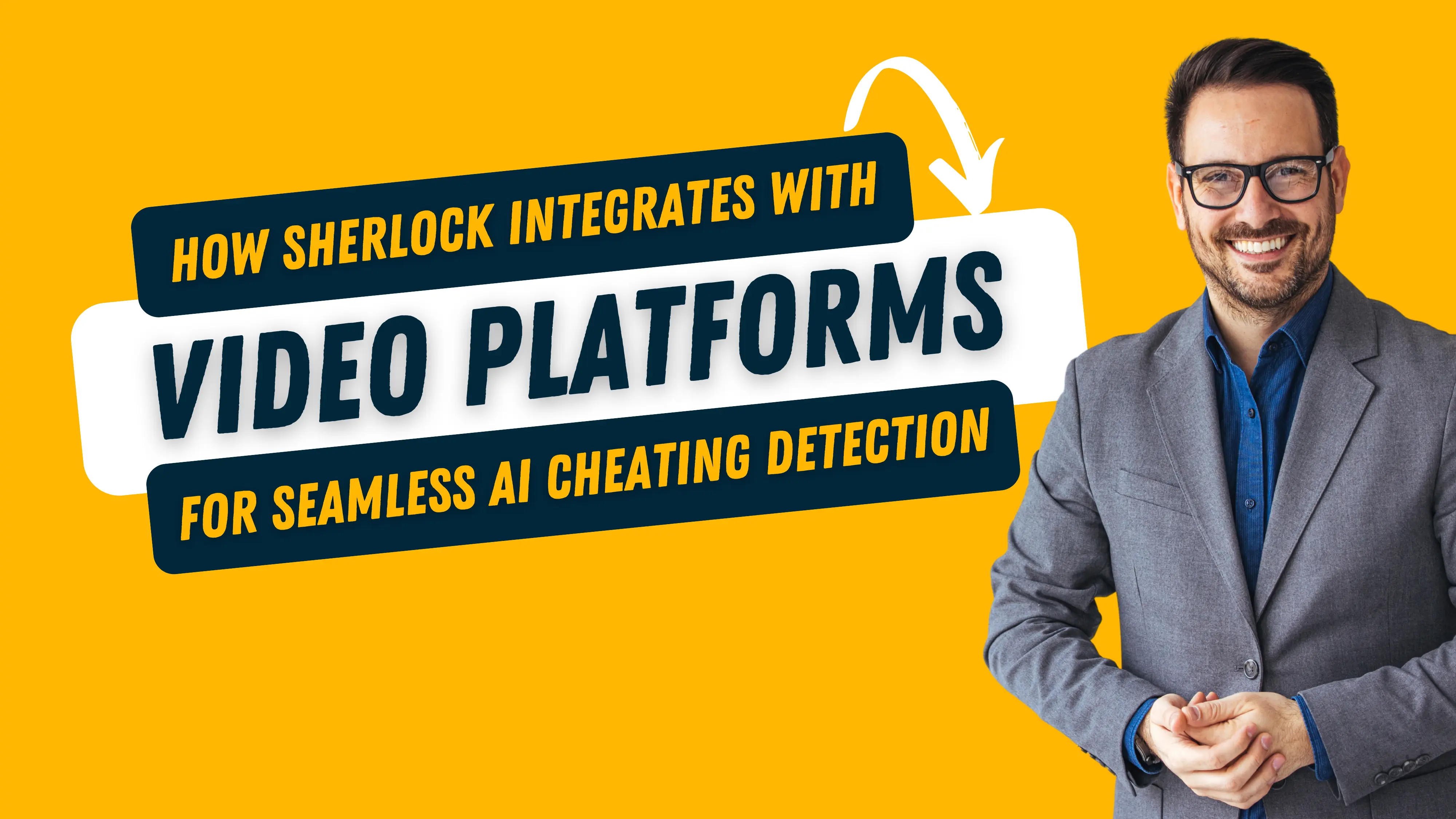Picture this: Your latest job posting attracted 300 applications overnight. Your recruiters now face the daunting task of reviewing each resume, spending an average of 6-8 seconds per candidate.
That's 30-40 hours of manual work just to create a shortlist. And here's the kicker – human bias and fatigue mean the best candidate might end up in the "no" pile simply because they were application number 247.
This scenario plays out daily in hiring teams worldwide. Traditional resume screening creates bottlenecks that slow down hiring, introduce unconscious bias, and overwhelm your recruitment team. The result? Missed talent, frustrated hiring managers, and burned-out recruiters.
But what if you could screen those 300 resumes in minutes instead of hours? What if every candidate received fair, consistent evaluation based on skills and qualifications rather than the reviewer's mood or energy level?
That's exactly what AI candidate screening software delivers. In this guide, you'll learn how artificial intelligence transforms the shortlisting process through advanced algorithms, automated filtering, and smart matching capabilities. We'll cover implementation strategies, ROI measurement, and practical steps to revolutionize your hiring process.
You'll discover how leading companies cut screening time by 75% while improving hire quality by 35%. Plus, we'll show you how to choose the right solution and avoid common pitfalls that derail AI screening initiatives.
Ready to transform your recruitment process? Let's dive into how AI-powered candidate screening can give your team a competitive advantage.
The Evolution from Manual to AI-Powered Screening
Traditional resume screening relies on human reviewers who manually read through applications, looking for keywords and qualifications. This approach worked when companies received 20-30 applications per role. But today's digital job boards generate hundreds of applications, making manual screening impossible to scale.
The problems with resume screening go deeper than just volume. Human reviewers suffer from decision fatigue after reviewing dozens of resumes. They unconsciously favor candidates with familiar backgrounds, education, or experiences. Studies show that identical resumes receive different ratings depending on the candidate's name, creating unfair advantages for some applicants.
Manual screening also lacks consistency. Different reviewers use different criteria, making it impossible to fairly compare candidates. One recruiter might prioritize experience while another focuses on education. This inconsistency creates a lottery system rather than a merit-based selection process.
AI candidate screening software addresses these challenges by applying consistent criteria to every application. Algorithms don't get tired, don't have unconscious bias, and can process hundreds of resumes in minutes rather than days.
The technology emerged in the early 2010s with simple keyword matching systems. These evolved into natural language processing tools that understand context and meaning. Today's machine learning models learn from your successful hires, continuously improving their ability to identify top candidates.
Current adoption rates show 67% of large enterprises use some form of automated screening, with small and medium businesses quickly following suit. The technology has proven its value through measurable improvements in hiring speed, quality, and diversity.
Before implementing AI screening, assess your current process using this framework: Calculate time spent per hire, measure quality metrics like 90-day retention, and document consistency issues across different reviewers. This baseline helps you measure improvement after implementation.
Understanding AI Screening Algorithms and Machine Learning Models
At its core, AI candidate screening software uses Natural Language Processing (NLP) to read and understand resume content just like a human would – but faster and more consistently. Instead of simply matching keywords, modern algorithms understand context, synonyms, and skill relationships.
Traditional keyword matching might miss a great candidate who lists "JavaScript" instead of "JS" or "project management" instead of "PM." NLP algorithms understand these are the same skills, expanding the talent pool rather than artificially limiting it.
Machine learning models take this further by learning from your hiring decisions. When you hire a candidate the AI recommended, the system learns what makes someone successful in your organization. When a recommended candidate doesn't work out, the algorithm adjusts its scoring criteria.
This creates a feedback loop that continuously improves screening accuracy. The AI learns that certain combinations of skills predict success in your specific roles and company culture. Over time, the recommendations become more precise and aligned with your actual hiring needs.
Predictive scoring represents the next evolution in automated resume screening. These systems analyze patterns from thousands of successful placements to predict candidate performance, retention likelihood, and cultural fit. The algorithms consider factors like career progression patterns, skill development rates, and job stability indicators.
Advanced systems address bias through algorithmic auditing and fairness constraints. They monitor for patterns that might disadvantage protected groups and adjust scoring to ensure equal opportunity. This creates more diverse candidate pools than traditional screening methods.
When evaluating AI vendors, ask these critical questions: How does your algorithm handle skill synonyms? What data sources train your models? How do you detect and prevent bias? Can you explain why a candidate received a specific score? How often do you retrain models with new data?
Understanding these technical foundations helps you make informed decisions about which solution fits your needs and budget.
Key Features That Make AI Screening Effective
Automated resume parsing forms the foundation of effective AI screening. The system extracts structured data from unstructured resumes, regardless of format or layout. This includes contact information, work history, education, skills, and certifications. Advanced parsing handles creative resume designs, multiple languages, and various file formats.
Skills assessment goes beyond simple keyword matching to understand skill levels and relationships. The AI recognizes that "senior developer" implies different capabilities than "junior developer" and understands that Python programming relates to data science roles. This contextual understanding creates more accurate skill profiles.
Experience level evaluation analyzes career progression patterns to gauge seniority and growth potential. The system identifies candidates who've consistently taken on increasing responsibility versus those who've remained static. It also recognizes transferable skills from different industries or roles.
Cultural fit indicators represent one of the most sophisticated features in modern automated resume screening. The AI analyzes communication style, career choices, and stated preferences to predict cultural alignment. For example, candidates who frequently change roles might not fit a company that values long-term commitment.
Integration capabilities determine how well the AI screening tool works with your existing systems. Look for seamless ATS integration that preserves your current workflow while adding AI intelligence. HRIS connectivity enables the system to learn from employee performance data, improving future predictions.
Customizable scoring criteria let you adjust the algorithm's priorities based on role requirements. A sales position might weight communication skills heavily, while an engineering role prioritizes technical capabilities. The best systems allow real-time adjustments without requiring technical expertise.
White-label solutions enable you to present AI screening as part of your branded candidate experience. Candidates interact with your company's interface while benefiting from powerful AI technology behind the scenes.
For different company sizes, prioritize features differently:
- Startups: Focus on ease of use and quick implementation
- Medium companies: Emphasize integration capabilities and customization
- Large enterprises: Prioritize advanced analytics and compliance features
Real-time analytics dashboards show screening performance, candidate quality metrics, and diversity indicators. This transparency helps you optimize the process and demonstrate ROI to stakeholders.
Measurable Benefits and ROI of AI Screening
Time savings represent the most immediate and visible benefit of AI candidate screening software. Companies typically reduce screening time from 40-50 hours per role to 2-3 hours. This 90% time reduction frees recruiters to focus on relationship building, interview preparation, and candidate experience improvements.
Quality of hire improvements emerge within 3-6 months of implementation. Organizations report 20-35% improvement in 90-day retention rates and 15-25% increase in performance ratings for AI-screened candidates. The algorithms identify subtle patterns that predict success better than manual review.
Cost reduction extends beyond recruiter time savings. Faster screening leads to shorter time-to-fill, reducing productivity losses from open positions. Better quality hires decrease turnover costs, which average 50-200% of annual salary depending on the role level.
Diversity and inclusion improvements occur because AI screening removes unconscious bias from initial candidate evaluation. Companies see 15-30% increases in diverse candidate advancement to interview stages. This happens because algorithms focus on qualifications rather than names, schools, or other bias-triggering factors.
Calculate your ROI using this framework: Multiply recruiter hourly cost by time saved per role, then multiply by annual hiring volume. Add cost savings from reduced turnover and faster fills. Factor in productivity gains from better hires. Most organizations see 300-500% ROI within the first year.
Don't forget to measure soft benefits like improved recruiter satisfaction, better candidate experience scores, and enhanced employer brand reputation. These contribute to long-term competitive advantages in talent acquisition.
Implementation Best Practices and Getting Started
Start your AI screening implementation with a pilot program focused on high-volume roles. Choose positions that receive 100+ applications regularly, where manual screening creates obvious bottlenecks. This approach demonstrates clear value while limiting risk and complexity.
Week 1-2: Establish baseline metrics for your current screening process. Track time per resume, screening-to-interview conversion rates, and hire quality indicators. Document pain points like inconsistent reviewer feedback or bias concerns.
Week 3-4: Configure the AI system with your job requirements and scoring criteria. Upload sample resumes from successful hires to train the algorithm. Set up integration with your ATS and establish user access controls.
Week 5-6: Run parallel screening where both human reviewers and AI evaluate the same candidates. Compare results to identify discrepancies and calibrate the algorithm. This builds confidence in the system before full deployment.
Change management becomes critical for successful adoption. Many recruiters fear AI will replace them rather than enhance their capabilities. Address these concerns through training that shows how AI handles tedious tasks, freeing recruiters for strategic work like candidate relationship building.
Train your team on interpreting AI scores and recommendations. The technology augments human judgment rather than replacing it. Recruiters should understand why candidates received specific scores and when to override algorithmic recommendations.
Common implementation pitfalls include insufficient training data, unrealistic timeline expectations, and resistance to process changes. Avoid these by starting with roles that have clear success criteria, allowing 60-90 days for optimization, and involving skeptical team members in the pilot design.
Monitor adoption rates, user satisfaction, and performance metrics throughout implementation. Be prepared to adjust algorithms, provide additional training, or modify workflows based on feedback. Successful implementation requires flexibility and continuous optimization.
Choosing the Right AI Screening Solution
Vendor evaluation starts with understanding your specific requirements. High-volume hiring needs different capabilities than executive search. Technical roles require sophisticated skills assessment, while sales positions need communication evaluation features.
Essential technical criteria include API quality for ATS integration, data security certifications, and algorithm transparency. Look for vendors who can explain their bias detection methods and provide audit trails for compliance requirements.
Scalability considerations become important as your hiring volume grows. Ensure the system handles peak recruiting periods without performance degradation. Cloud-based solutions typically offer better scalability than on-premise installations.
Customization capabilities determine how well the solution adapts to your unique requirements. Some organizations need industry-specific skill libraries, while others require custom scoring algorithms. Evaluate customization options against implementation complexity and ongoing maintenance requirements.
Support and training services significantly impact success rates. Look for vendors offering dedicated implementation specialists, ongoing optimization consulting, and comprehensive user training programs. The best solutions provide proactive support that helps you maximize ROI.
During vendor demos, ask these specific questions:
- How does your algorithm handle non-traditional career paths?
- What data sources train your models, and how often do you update them?
- Can you provide bias audit reports for your algorithms?
- How quickly can you customize scoring criteria for new roles?
- What integration support do you provide during implementation?
Pricing models vary significantly across vendors. Some charge per candidate screened, others use monthly subscriptions, and enterprise solutions often include custom pricing. Calculate total cost of ownership including implementation, training, and ongoing support costs.
Use this scorecard template to objectively compare vendors. Weight criteria based on your priorities, then score each vendor on a 1-10 scale. This systematic approach prevents emotional decision-making and ensures you select the best fit for your needs.
Request pilot programs or trial periods to test real-world performance before committing to annual contracts. The best vendors offer risk-free trials that let you evaluate the solution with your actual job postings and candidate pool.
Advanced AI Features and Future Capabilities
Predictive analytics represents the cutting edge of AI candidate screening software. These systems analyze historical hiring data to predict not just who can do the job, but who will excel and stay with your company long-term. The algorithms consider factors like career trajectory patterns, skill development rates, and job satisfaction indicators.
Real-time market intelligence adds another dimension to screening decisions. Advanced systems tap into salary databases, job market trends, and competitor hiring patterns. This helps you identify candidates who might be underpaid and motivated to move, or those whose salary expectations exceed market rates.
Social media and professional network integration expands the candidate profile beyond traditional resumes. The AI analyzes LinkedIn activity, GitHub contributions, or professional blog posts to assess technical skills, thought leadership, and industry engagement. This provides a more complete picture of candidate capabilities.
Video interview analysis extends automated assessment beyond written documents. AI systems analyze speech patterns, word choice, and even facial expressions to gauge communication skills, confidence levels, and cultural fit indicators. This technology particularly benefits remote hiring where in-person assessment isn't possible.
Behavioral assessment capabilities help predict job performance and team dynamics. The AI identifies patterns in communication style, problem-solving approaches, and work preferences that correlate with success in specific roles or company cultures.
Integration with structured AI interviews creates seamless candidate evaluation workflows. Screening recommendations flow directly into interview scheduling, with customized question sets based on the candidate's strengths and development areas identified during screening.
Plan your AI capability roadmap based on business priorities and technical readiness. Start with proven features like resume screening and skills assessment. Add predictive analytics once you have sufficient historical data. Consider emerging capabilities like video analysis for future competitive advantage.
The future points toward even more sophisticated AI that understands soft skills, predicts team dynamics, and optimizes entire talent acquisition strategies. Organizations that start building AI capabilities now will be best positioned to leverage these advanced features as they mature.
Overcoming Common Concerns and Objections
Bias concerns top the list of AI screening objections, often voiced by both hiring teams and candidates. Address this proactively by explaining how algorithmic bias differs from human bias. While AI can inherit biases from training data, it's also programmable to actively counteract bias through fairness constraints and regular auditing.
Modern AI candidate screening software includes bias detection features that monitor for patterns disadvantaging protected groups. These systems flag potential issues and adjust algorithms to ensure fair evaluation. This creates more equitable outcomes than traditional screening methods prone to unconscious bias.
Maintaining human connection in automated processes requires thoughtful design. Position AI as an enhancement tool that frees recruiters for relationship building rather than a replacement for human judgment. Train teams to use AI insights while applying emotional intelligence and cultural intuition that machines can't replicate.
Transparency builds trust with both internal teams and candidates. Provide clear explanations of how the AI makes decisions and what factors influence candidate scores. Offer candidates feedback on their application status and areas for improvement. This transparency differentiates your company from competitors using "black box" screening methods.
Data privacy and security concerns require robust policies and vendor vetting. Ensure your AI screening solution complies with relevant regulations like GDPR or CCPA. Implement data retention policies that automatically delete candidate information after specified periods. Provide clear privacy notices explaining how candidate data is collected, used, and protected.
Legal compliance becomes increasingly important as regulations evolve. Work with legal counsel to understand requirements in your jurisdiction. Document your screening criteria and decision-making processes to support audit requests. Some regions require algorithmic auditing or candidate right-to-explanation features.
Building stakeholder confidence requires demonstrating clear benefits while addressing concerns directly. Share success stories from similar organizations, provide transparent metrics, and offer pilot programs that prove value before full commitment.
Consider implementing advanced security features that protect both candidate data and your company's intellectual property. These measures reassure stakeholders about the technology's reliability and professionalism.
Transform Your Hiring Process with AI Screening
AI candidate screening software represents more than just automation – it's a fundamental shift toward data-driven, fair, and efficient talent acquisition. The technology eliminates screening bottlenecks that slow down hiring while improving the quality and diversity of candidate pools.
The key benefits speak for themselves: 90% time savings in screening, 35% improvement in hire quality, and significant increases in diverse candidate advancement. These aren't just efficiency gains – they're competitive advantages that help you win top talent in a challenging market.
Success requires thoughtful implementation focused on change management, proper training, and continuous optimization. Start with a pilot program, measure results carefully, and expand gradually as your team builds confidence and expertise with the technology.
The future belongs to organizations that embrace AI as a partner in talent acquisition rather than a threat to human recruiters. The most successful companies will be those that combine algorithmic intelligence with human insight to create exceptional candidate experiences and hiring outcomes.
Ready to revolutionize your screening process? Start by assessing your current challenges and identifying high-volume roles where AI screening can deliver immediate impact. Evaluate vendors using our framework, and remember that the best solution is one that aligns with your specific needs and culture.
Take the first step today by calculating potential ROI for your organization. The numbers will likely surprise you – and convince stakeholders that AI screening isn't just a nice-to-have feature, but an essential tool for competitive talent acquisition.
The question isn't whether AI will transform recruitment – it's whether you'll lead the change or follow behind. Start your AI screening journey today and give your team the tools they need to find exceptional talent faster than ever before.


.png)








.svg)